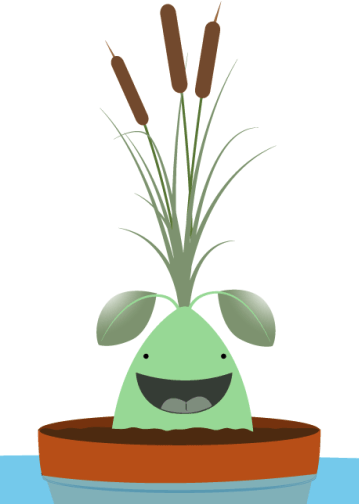Wait, You Can Eat It?
So you’re out swimming, basking on the beach, or fishing and it happens. Your stomach starts to growl. But you forgot lunch! It’s at that moment you discover that the long, brown seed head of the common cattail (Typha latifolia) looks very much like a corndog. In fact, some people refer to it as “corndog grass.”
While this aquatic herbaceous plant may be tempting, the experience of biting into a cattail cannot be likened to a savory, breaded meat on a stick. Be prepared for something much more… dry. In a bad sort of way. (No, we haven’t tried).
That being said, cattails are actually incredibly edible. Tender cattail shoots can be eaten raw or fried up for a treat and the roots can be cooked or used to make flour. Cattails also produce abundant yellow pollen that can be added to flours, pancake mix or cornbread batter, like the kind used to make corndogs.
See? You weren’t too wrong when you thought it looked like a corndog. But eating the corndog-looking part right off the stick is still a bad idea.
Brian Rutter, PhD, is the cofounder of Hundredfold Video and plant biologist working for 2Blades at the University of Minnesota. Subscribe to our newsletter to receive our “Sower Stories – Odd Facts About Plants” and video production tips in your inbox every month!

